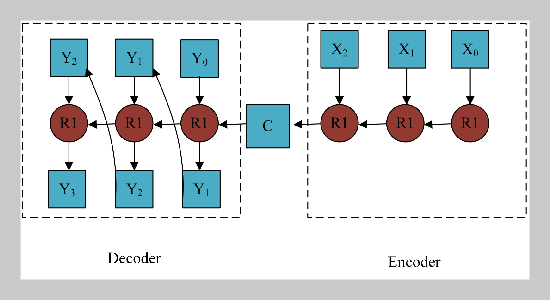- [1] A. Russo, G. D’Onofrio, A. Gangemi, F. Giuliani, M. Mongiovi, F. Ricciardi, F. Greco, F. Cavallo, P. Dario, D. Sancarlo, et al., (2019) “Dialogue systems and con�versational agents for patients with dementia: The human– robot interaction" Rejuvenation research 22(2): 109–120. DOI: https: //doi.org/10.1089/rej.2018.2075.
- [2] J. Hedges and M. Sadrzadeh, (2019) “A generalised quantifier theory of natural language in categorical compo�sitional distributional semantics with bialgebras" Math�ematical Structures in Computer Science 29(6): 783–809. DOI: https: //doi.org/10.1017/S0960129518000324.
- [3] S. K. Parr and G. T. Gobbel, (2020) “Considerations for advancing nephrology research and practice through natu�ral language processing" Kidney International 97(2): 263–265. DOI: https: //doi.org/10.1016/j.kint.2019.12.001.
- [4] P. Li and K. Mao, (2019) “Knowledge-oriented convolu�tional neural network for causal relation extraction from natural language texts" Expert Systems with Applica�tions 115: 512–523. DOI: https: //doi.org/10.1016/j.eswa.2018.08.009.
- [5] P. Li, H. Yu, W. Zhang, G. Xu, and X. Sun, (2020) “Sa�nli: A supervised attention based framework for natural language inference" Neurocomputing 407: 72–82. DOI: https: //doi.org/10.1016/j.neucom.2020.03.092.
- [6] V. Sorin, Y. Barash, E. Konen, and E. Klang, (2020) “Deep learning for natural language processing in radiol�ogy—fundamentals and a systematic review" Journal of the American College of Radiology 17(5): 639–648. DOI: https: //doi.org/10.1016/j.jacr.2019.12.026.
- [7] E. Ötle¸s, D. E. Kendrick, Q. P. Solano, M. Schuller, S. L. Ahle, M. H. Eskender, E. Carnes, and B. C. George, (2021) “Using natural language processing to automati�cally assess feedback quality: Findings from 3 surgical res�idencies" Academic Medicine 96(10): 1457–1460. DOI: https: //doi.org/10.1097/ACM.0000000000004153.
- [8] D. Zhu, (2019) “Humor robot and humor generation method based on big data search through IOT" Cluster Computing 22: 9169–9175. DOI: https: //doi.org/10.1007/s10586-018-2097-z.
- [9] T. Sono, S. Satake, T. Kanda, and M. Imai, (2019) “Walking partner robot chatting about scenery" Ad�vanced Robotics 33(15-16): 742–755. DOI: https: //doi.org/10.1080/01691864.2019.1610062.
- [10] S. Heath, J. Liddle, and J. Wiles, (2020) “The challenges of designing a robot for a satisfaction survey: Surveying humans using a social robot" International Journal of Social Robotics 12(2): 519–533. DOI: https://doi.org/10.1007/s12369-019-00604-0.
- [11] E. K. Chiou, M. Demir, V. Buchanan, C. C. Corral, M. R. Endsley, G. J. Lematta, N. J. Cooke, and N. J. McNeese, (2021) “Towards human–robot teaming: Trade�offs of explanation-based communication strategies in a virtual search and rescue task" International Journal of Social Robotics: 1–20. DOI: https: //doi.org/10.1007/s12369-021-00834-1.
- [12] M. Shiomi, A. Nakata, M. Kanbara, and N. Hagita, (2021) “Robot reciprocation of hugs increases both inter�acting times and self-disclosures" International Journal of Social Robotics 13: 353–361. DOI: https: //doi.org/10.1007/s12369-020-00644-x.
- [13] G. Chen, W. Sheng, Y. Li, Y. Ou, and Y. Gu, (2022) “Hu�manoid Robot Portrait Drawing Based on Deep Learning Techniques and Efficient Path Planning" Arabian Jour�nal for Science and Engineering 47(8): 9459–9470. DOI: https: //doi.org/10.1007/s13369-021-06245-8.
- [14] K. E. Gunther, A. L. Hild, and S. L. Bieber, (2018) “Natural Resource Experience Affects Engagement with Emotionally Primed Presentations of Science" Range�land Ecology & Management 71(2): 163–170. DOI: https: //doi.org/10.1016/j.rama.2017.12.004.
- [15] A. V. Karhade, M. E. Bongers, O. Q. Groot, E. R. Kazarian, T. D. Cha, H. A. Fogel, S. H. Hershman, D. G. Tobert, A. J. Schoenfeld, C. M. Bono, et al., (2020) “Natural language processing for automated detec�tion of incidental durotomy" The Spine Journal 20(5): 695–700. DOI: https://doi.org/10.1016/j.spinee.2019. 12.006.
- [16] J. Vermassen, K. Colpaert, L. De Bus, P. Depuydt, and J. Decruyenaere, (2020) “Automated screening of natu�ral language in electronic health records for the diagnosis septic shock is feasible and outperforms an approach based on explicit administrative codes" Journal of Critical Care 56: 203–207. DOI: https://doi.org/10.1016/j.jcrc.2020.01.007.
- [17] N. Maganti, H. Tan, L. M. Niziol, S. Amin, A. Hou, K. Singh, D. Ballouz, and M. A. Woodward, (2019) “Nat�ural language processing to quantify microbial keratitis measurements" Ophthalmology 126(12): 1722–1724. DOI: https: //doi.org/0.1016/j.ophtha.2019.06.003.
- [18] S. K. Kang, K. Garry, R. Chung, W. H. Moore, E. Itur�rate, J. L. Swartz, D. C. Kim, L. I. Horwitz, and S. Blecker, (2019) “Natural language processing for iden�tification of incidental pulmonary nodules in radiology reports" Journal of the American College of Radi�ology 16(11): 1587–1594. DOI: https: //doi.org/10.1016/j.jacr.2019.04.026.
- [19] S. Mor and G. Gupta, (2021) “Artificial intelligence and technical efficiency: The case of Indian commercial banks" Strategic Change 30(3): 235–245. DOI: https: //doi.org/10.1002/jsc.2406.
- [20] N. Haristiani, A. Danuwijaya, M. Rifai, and H. Sar�ila, (2019) “Gengobot: A chatbot-based grammar appli�cation on mobile instant messaging as language learning medium" Journal of Engineering Science and Tech�nology 14(6): 3158–3173.
- [21] M. S. Baig, A. Imran, A. U. Yasin, A. H. Butt, and M. I. Khan, (2022) “Natural language to sql queries: A review" International Journal of Innovations in Science Technology 4: 147–162.
- [22] R. L. Boyd and H. A. Schwartz, (2021) “Natural lan�guage analysis and the psychology of verbal behavior: The past, present, and future states of the field" Journal of Language and Social Psychology 40(1): 21–41. DOI: https: //doi.org/10.1177/0261927X20967028.
- [23] J. Roh, S. Park, B.-K. Kim, S.-H. Oh, and S.-Y. Lee, (2021) “Unsupervised multi-sense language models for natural language processing tasks" Neural Networks 142: 397–409. DOI: https://doi.org/10.1016/j.neunet.2021.05.023.
- [24] V. D. Badal, S. A. Graham, C. A. Depp, K. Shinkawa, Y. Yamada, L. A. Palinkas, H.-C. Kim, D. V. Jeste, and E. E. Lee, (2021) “Prediction of loneliness in older adults using natural language processing: exploring sex differ�ences in speech" The American Journal of Geriatric Psychiatry 29(8): 853–866. DOI: https: //doi.org/10.1016/j.jagp.2020.09.009.
- [25] V. D. Badal, S. A. Graham, C. A. Depp, K. Shinkawa, Y. Yamada, L. A. Palinkas, H.-C. Kim, D. V. Jeste, and E. E. Lee, (2021) “Prediction of Loneliness in Older Adults Using Natural Language Processing: Exploring Sex Differences in Speech" The American Journal of Geriatric Psychiatry 29(8): 853–866. DOI: https: //doi.org/10.1016/j.jagp.2020.09.009.
















